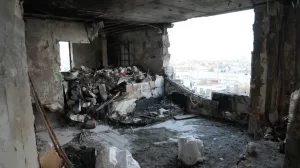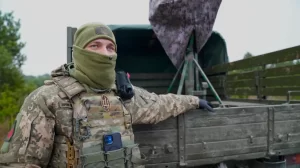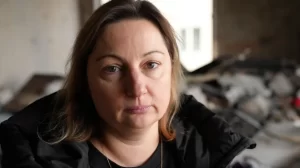Surge in Russian drone strikes test Ukrainian defences and devastate families
4 min read
Maria was just 14 years old when she was killed by a Russian drone. © Facebook/Maria Troyanivska

Maria was just 14 years old when she was killed by a Russian drone. © Facebook/Maria Troyanivska
Maria Troyanivska’s life was tragically cut short when a Russian drone struck her bedroom, killing her instantly. Her mother, Viktoria, recounts how they rushed to her room when the explosion occurred, only to find the entire space engulfed in flames. Despite their efforts to extinguish the fire, it was impossible to save Maria, who was 14 years old. “She died immediately, and then burned,” Viktoria says through tears. “We had to bury her in a closed coffin. She had no chance of surviving.”
Maria’s death was a result of the increasing use of Iranian-made Shahed drones by Russia, which have become a deadly tool in its ongoing war against Ukraine. According to Ukraine’s General Staff, over 2,000 drones were launched in October, setting a new record for the conflict. In comparison, just 1,410 were fired in September and 818 in August. These attacks are part of a broader surge in Russian offensives across the front lines, with the situation complicated by the involvement of North Korean troops backing Moscow. With the potential re-election of Donald Trump in the United States, Ukrainian forces face growing uncertainty regarding future Western support.
The Shahed drones are designed for maximum damage, with propeller-driven engines and distinctive wing shapes that carry deadly warheads. Russia has also started launching decoy drones, which carry no explosives but are intended to confuse Ukraine’s air defense systems and deplete their resources. These drones are cheaper and easier to deploy than missiles, making them an effective tool for both tactical and psychological warfare.

Every day, Ukrainians face the growing threat of these drones, with sirens wailing as night falls, signaling incoming attacks. Just in the first days of November, Russian drones struck cities like Kyiv, Kharkiv, Odesa, Mykolaiv, and Zaporizhzhia. On one particularly devastating Sunday, President Volodymyr Zelensky reported that Russia launched 145 drones in a single day, a new record. While Ukraine’s air defense managed to shoot down 62 drones, another 67 were either intercepted by electronic warfare or simply vanished from radar, raising fears of undetected hits.
Ukrainian military forces, however, are struggling to keep pace with the surge in drone strikes. Sgt. Mykhailo Shamanov, a spokesperson for Kyiv’s military administration, emphasized that while they are intercepting many of the drones, the true goal of these attacks is not military but civilian terror. “The general aim is terrorizing civilians,” he told the BBC, adding that the frequency of these attacks has made every night feel like a lottery—uncertain, unpredictable, and dangerous.

Ukraine’s air defenses, though resilient, are being stretched thin. Military units like Vitaliy’s, who work tirelessly to shoot down drones, face longer and more grueling shifts. In the past, air alerts would last six hours, but now they drag on for 12 to 13 hours a day. “Half a year ago, it was 50 drones a month. Now the number has risen to 100 drones every night,” Vitaliy explained. His unit, which moves swiftly on a flatbed truck equipped with anti-drone weaponry, has become a crucial line of defense, but even they acknowledge that air defense can only do so much.
For civilians like Viktoria and her family, the constant drone attacks have shattered their sense of safety. After Maria’s death, the family was forced to leave their apartment, which had been destroyed by the blast, and seek refuge with friends. They now sleep in a corridor, seeking shelter from the nightly drone assaults. “It’s exhausting,” Viktoria says, but adds, “It makes people even more angry and outraged. People cannot understand why these attacks are hitting peaceful homes.”

Maria’s father, Volodymyr, remains bewildered by the senselessness of the war. “I don’t understand at all why this war started and for what,” he says. “What sense does it make? Not from an economic perspective, nor human, nor territorial. People just die. It’s just some ambitions of sick people.”
As the conflict continues, Ukraine’s air defense forces remain stretched thin, fighting a relentless barrage of drones aimed at terrorizing civilians and disrupting daily life. Despite the pain and trauma inflicted on families like Viktoria’s, the Ukrainian people’s resolve remains unbroken, though the psychological toll is undeniable. The war, for them, is no longer just a fight against an invading force—it is a battle for survival, for their homes, and for a future free from constant fear.